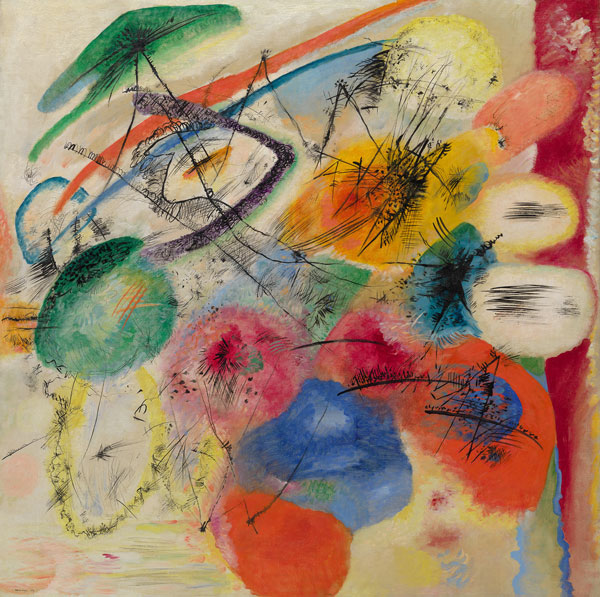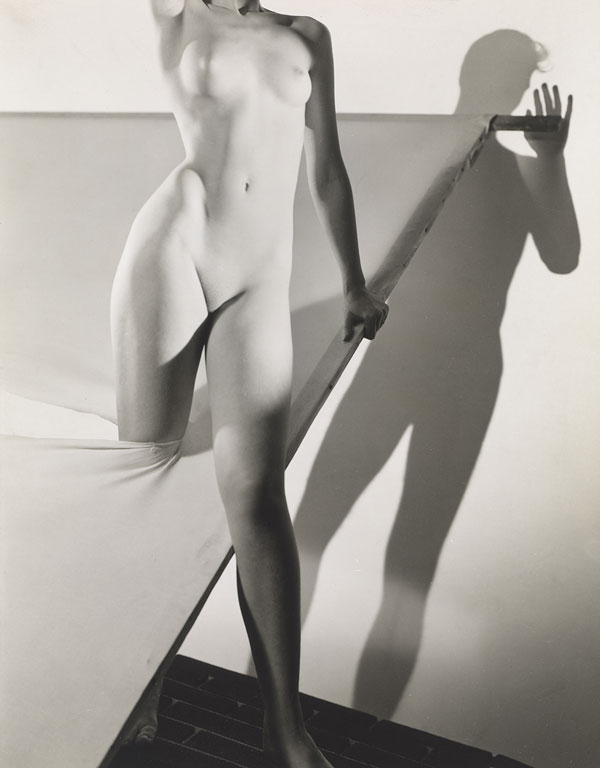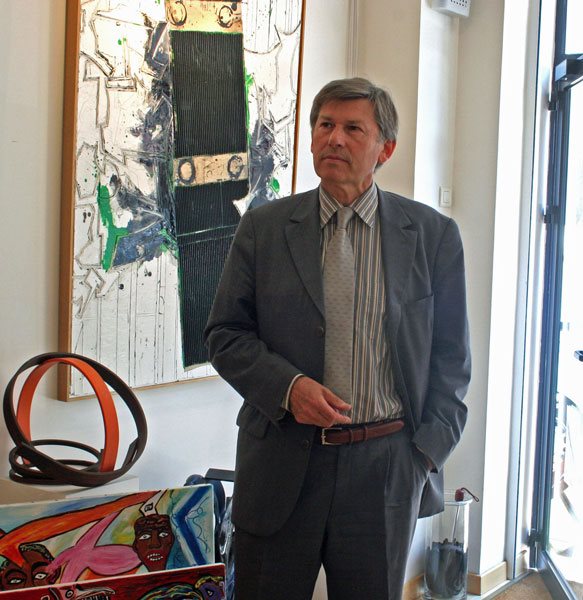 |
| © Ben Vautier, être libre – droits réservés |
|
galerie eva vautier Être libre BEN Commissariat de l'exposition Eva Vautier Pour le Domaine départemental de Chamarande, Ben rassemble plus de 400 œuvres, issues pour la plupart de sa collection personnelle, mais aussi de collections particulières. |
Le Musée Prive - Art Magazine
Tate Liverpool Exhibition Don McCullin
 |
| Don Mccullin, fishermen playing during their lunch break, Scarborough, Yorkshire 1967 © Don Mccullin |
|
16 September 2020 – 9 May 2021 TATE LIVERPOOL This one-way route guides you from the Main entrance and through to the exhibition. There will be access to toilets, our shop and an opportunity to buy food and drink during your visit. Discover the work of legendary British photographer Don McCullin (b. 1935). See more than 200 iconic photographs captured over the last 60 years. The exhibition includes poignant images of international conflict. These will be shown alongside photographs of the UK, which depict scenes of working-class life in the industrial north and London’s East End. On display will be some of McCullin’s most recent landscape photography taken in the artist’s home county of Somerset. In addition to the images shown at Tate Britain, there will be a special selection of photographs depicting life and industrial scenes of Liverpool and other northern towns and cities during the 1960s and 70s. Alongside these photographs, all printed by McCullin himself in his own darkroom, you’ll have the opportunity to see his magazine spreads, contact sheets, helmet and the Nikon camera which took a bullet for him in Cambodia. |
Lee Krasner Museo Guggenheim Bilbao
 |
| Lee Krasner Combat, 1965 Oil on canvas 179 × 410.4 cm National Gallery of Victoria, Melbourne, Felton Bequest, 1992 (IC1-1992) © The Pollock-Krasner Foundation |
|
September 18, 2020 - January 10, 2021 Museo Guggenheim Bilbao Lee Krasner (b. 1908; d. 1984) was a pioneer of Abstract Expressionism, the movement that made New York a thriving center for modern art in the postwar period. Born in Brooklyn, in an Orthodox Jewish, Russian émigré family, she decided to become an artist at 14. She applied to the only school in New York that offered an art course for girls and would later study at the Cooper Union, the National Academy of Design, and the Hans Hofmann School of Fine Arts. Krasner was one of the first artists in New York to adopt an entirely abstract approach, and in 1942 she was included in the exhibition American and French Paintings at the McMillen Inc., alongside her friends Willem de Kooning and Stuart Davis. The one fellow exhibitor that she had not met before was Jackson Pollock, so she decided to visit his studio. In 1945 they married and moved to Springs, Long Island. Unlike many of her contemporaries, Krasner refused to develop a 'signature image,' which she considered to be too rigid. Working in cycles, she sought out new means for authentic expression, even during the most tumultuous of times, including Pollock's sudden death in a car crash in 1956. Krasner's formidable spirit is felt throughout the body of work that she created over more than fifty years in the studio. |
Lee Krasner Icarus, 1964 Oil on canvas 116.8 x 175.3 cm |
Journées européennes du patrimoine 2020
 |
|
A l'occasion des Journées européennes du Patrimoine, les 19 et 20 septembre 2020, les Archives départementales du Haut-Rhin vous proposent 5 expositions virtuelles sur la thématique "Patrimoine et éducation : Apprendre pour la vie !". (Re) découvrez des personnalités sous des angles attendus ou surprenants. Laissez-vous guider par votre curiosité. Picorez, survolez, approfondissez… Faites-vous plaisir et laissez-vous emporter à travers un voyage temporel plein de surprises et… sans virus ! encore que… [nb : le encore que s’explique par quelques interviews qui ont eu lieu pendant le confinement ou le sketch de Catherine et Liliane sur la « Maladie X »…] http://www.archives.haut-rhin.fr/Education/p167/Journees-europeennes-du-patrimoine-2020 Le 17/09/2020 par départementales Archives |
Derniers jours de l'exposition Edward Hopper à la Fondation Beyeler
 |
| Edward Hopper, The Lee Shore, 1941, huile sur toile, 71,7 x 109,2 cm, The Middleton Family Collection; © Heirs of Josephine Hopper / 2019, ProLitteris, Zurich; Photo: © 2019. Photo Art Resource/Scala, Florence |
|
Plus que quelques jours: l'exposition «Edward Hopper» à la Fondation Beyeler prend fin le 20 septembre 2020 L'exposition «Edward Hopper», grand succès public à la Fondation Beyeler à Riehen/Bâle, touche à sa fin. Plus de 200'000 visiteurs·ses ont pu voir les œuvres de cet artiste américain majeur, auquel la crise du coronavirus a conféré une actualité inattendue – dans la presse et sur les réseaux sociaux, Hopper s'est vu qualifié fréquemment de «peintre du moment». Ses paysages emblématiques des années 1909 à 1965 sont à voir à la Fondation Beyeler jusqu'au 20 septembre 2020. Pour la dernière soirée de cette exposition plébiscitée par le public, la Fondation Beyeler prévoit dimanche 20 septembre un horaire d'ouverture étendu à 21h, un bar à boissons et de la musique live dans le Pavillon du Berower Park. Edward Hopper (1882–1967) compte parmi les artistes majeurs du 20ème siècle. Connu en Europe principalement pour ses peintures à l'huile de scènes de la vie urbaine, dont certaines ont acquis une popularité exceptionnelle, jusqu'à présent ses paysages avaient reçu moins d'attention. Étonnamment, aucune exposition importante n'avait encore été consacrée au regard porté par Hopper sur le paysage américain. C'est par ailleurs la première fois qu'une exposition est consacrée à Edward Hopper en Suisse alémanique. Initialement programmée jusqu'au 17 mai et prolongée jusqu'au 20 septembre, la vaste exposition de la Fondation Beyeler présente des peintures de paysage emblématiques de Hopper ainsi qu'une sélection d'aquarelles et de dessins. |
Réflections sur la Paix Red Cross Museum Geneve
 |
| Imagine Réflexions sur la paix Reflections on peace 16.9.2020 photo © Gary Knight / |
À quoi ressemble la paix, au-delà des images qu’on s’en fait ? |
|
Nous sommes très heureux de vous présenter notre nouvelle exposition temporaire «Imagine. Réflexions sur la paix», qui ouvrira ses portes le mardi 15 septembre 2020. Des grands noms de la photographie retournent sur les lieux où ils ont réalisé, pour certains d’entre eux, leurs premiers reportages, il y a plus de 20 ans, afin d’examiner les conditions et conséquences des processus de paix au Liban, en Irlande du Nord, en Bosnie-Herzégovine, au Rwanda, au Cambodge et en Colombie, pays qui ont connu des conflits de longue durée. Sorties pour la plupart du contexte brûlant qui les a fait naître et présentées en tableaux parfois denses, ces 160 photographies rendent compte d’un processus fragile, d’une réalité complexe faite de succès, d’échecs, d’espoir et d’hésitations. Liste des photographes : Stephen Ferry, Ron Haviv, Gary Knight, Don McCullin, Roland Neveu, Gilles Peress, Jack Picone et Nichole Sobecki. |
KEHINDE WILEY Centre d'Art de la Malmaison Cannes
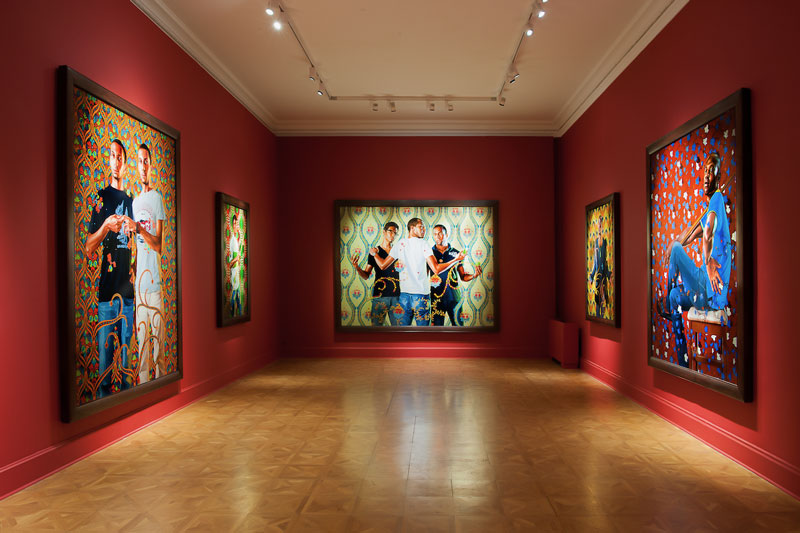 |
| Vue de l'exposition Kehinde Wiley, Peintre de l'épopée, Centre d'art La Malmaison, à Cannes © Olivier Clavel |
|
KEHINDE WILEY, 10 juillet > 1er novembre 2020 Centre d'Art de la Malmaison, Cannes Du 10 juillet au 1er novembre, le Centre d'Art de la Malmaison sur la Croisette, accueille l’une des stars internationales les plus recherchées d'aujourd'hui, l'américain Kehinde Wiley. À travers plus d’une vingtaine d'œuvres, le Centre d'art la Malmaison dévoile le dessein épique qui anime le travail de l’artiste depuis plus d’une décennie. Puisant son inspiration dans la peinture classique, du Titien à Gainsborough en passant par Van Dyck ou Ingres, Kehinde Wiley propose une perspective unique, politique et esthétique. En choisissant de rendre visible les invisibles de l’histoire, il interroge les spectateurs sur les questions de perception, de pouvoir et d’origine. |
MACM Musée d'Art Classique de Mougins
|
MACM Musée d'Art Classique de Mougins |
|
|
JEAN COCTEAU & SA MYTHOLOGIE MUSEE D'ART CLASSIQUE DE MOUGINS
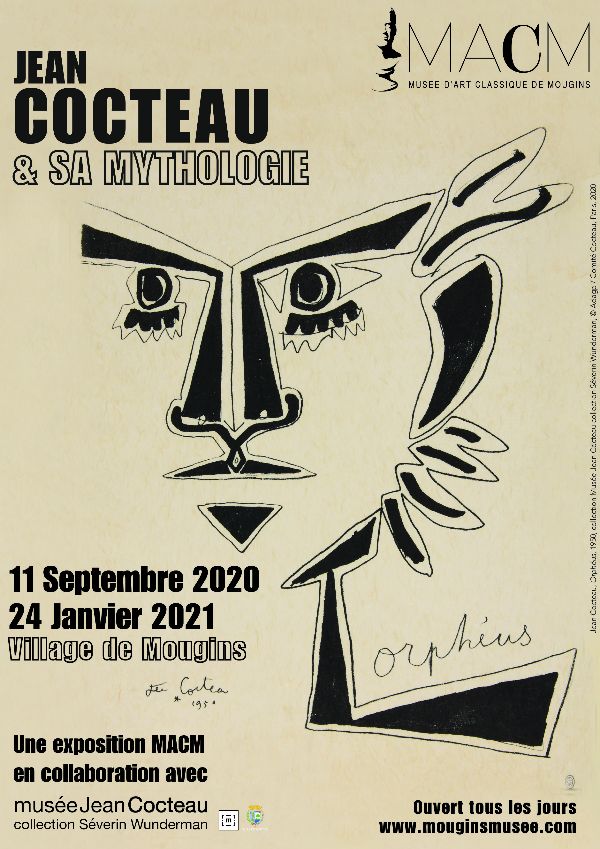 |
| Musée d'Art Classique de Mougins 5 rue des Muriers 06250 MOUGINS - France 11 septembre 2020 - 24 janvier 2021 The Musée d'Art Classique de Mougins welcomes within its walls the man who was once known as one of the most fashionable figures in Paris, an aesthete, a Dandy & above all a great artist with multiple talents: a painter, a draftsman, a filmmaker, a choreographer, a playwright, a poet... Jean Cocteau ! |
Gérard Fromanger Musée des Beaux Arts Caen
Dialogues with Picasso. Collection 2020-2023 MUSEO PICASSO MÁLAGA
 |
| Pablo Picasso (1881-1973). Susanna and the Elders. Nice, summer 1955. Fundación Almine y Bernard Ruiz-Picasso para el Arte, Madrid. On temporary loan to the Museo Picasso Málaga © FABA photo: Hugard & Vanoverschelde Photography © Sucesión Pablo Picasso, VEGAP, Madrid, 2020 |
|
MUSEO PICASSO MÁLAGA https://www.museopicassomalaga.org/en By periodically refreshing, and thus revising, its permanent collection, Museo Picasso Málaga is in a way following in the footsteps of Picasso himself, who innovated constantly with his art throughout his life. With its thematic and chronological layout, this new exhibition narrative in the Palacio de Buenavista will enable visitors to acquire a deeper knowledge of Pablo Picasso’s artistic career by grouping his works together in a way that helps them to understand his artistic processes. This is the sixth transformation of the exhibition rooms of the Palacio de Buenavista since the museum first opened in 2003, thanks to the negotiations that took place to ratify the agreement between the Consejería de Cultura y Patrimonio de la Junta de Andalucía and Fundación Almine y Bernard Ruiz-Picasso para el Arte (FABA), which has been renewed for three more years, during which time a total of 162 works by Picasso will be added to the 233 works MPM holds in its own collection. The new layout of the exhibition rooms owes its unique features to an innovative scenographic layout in the museum spaces. There are 44 paintings, 49 drawings, 40 graphic works, 10 sculptures, 17 ceramics, 1 tapestry and 1 linocut plate. With the 233 works belonging to Museo Picasso Málaga and these 162 from Fundación Almine y Bernard Ruiz-Picasso para el Arte (FABA), the collection will hold almost four hundred works by Pablo Picasso, dating from between 1894 and 1972, of which 120 will be on display in the Palacio de Buenavista. These works build a story that begins with Picasso’s formative years and continues through the most representative periods of the artist’s career. |
MOMA ANNOUNCES THE FIRST US RETROSPECTIVE IN 40 YEARS DEDICATED TO MULTIFACETED ABSTRACT ARTIST SOPHIE TAEUBER-ARP
 |
| Sophie Taeuber-Arp. Composition of Circles and Overlapping Angles. 1930. Oil on canvas. 19 ½ x 25 ¾” (49.5 x 64.1 cm). The Museum of Modern Art, New York. The Riklis Collection of McCrory Corporation. Photo: The Museum of Modern Art, Department of Imaging and Visual Resources. © 2019 Artists Rights Society (ARS), New York / VG Bild-Kunst, Bonn |
|
Bringing Together Some 400 Works, the Exhibition Will Open at The Museum of Modern Art, New York, with Subsequent Presentations by Kunstmuseum Basel and Tate Modern, London NEW YORK, The Museum of Modern Art announces Sophie Taeuber- Arp: Living Abstraction, the first major US exhibition in nearly 40 years to survey this multifaceted abstract artist’s |
Ben Vautier L'art est un virus Fondation Linda et Guy Pieters Saint Tropez
 |
|
L'ART EST UN VIRUS - Exposition Ben Vautier du 4 juin - 11 octobre 2020 Fondation Linda et Guy Pieters Ben, de son vrai nom Benjamin Vautier, est un artiste français d’origine suisse, né le 18 juillet 1935, à Naples (Italie), de mère irlandaise et occitane, et de père suisse francophone. Il est le petit-fils de Marc Louis Benjamin Vautier, peintre suisse du XIXe siècle. Il vit ses cinq premières années à Naples. Après la déclaration de guerre, en 1939, Ben et sa mère vont multiplier les voyages : Suisse, Turquie, Égypte, Italie…, pour enfin s’installer à Nice en 1949. Il étudie à l’école du Parc-Impérial et à la pension du collège Stanislas. Sa mère lui trouve un travail à la librairie Le Nain bleu en tant que garçon de course, puis lui achète une librairie-papeterie. À la fin des années 1950, il la vend pour ouvrir une petite boutique, dont il transforme la façade en accumulant quantité d’objets et dans laquelle il vend des disques d’occasion. Rapidement, sa boutique devient un lieu de rencontres et d’expositions où se retrouvent les principaux membres de ce qui deviendra l’école de Nice : César, Arman, Martial Raysse, etc. Proche d’Yves Klein et séduit par le Nouveau Réalisme, il est convaincu que « l’art doit être nouveau et apporter un choc ». |
Kandinsky Museo Guggenheim Bilbao
|
Kandinsky Museo Guggenheim Bilbao As a pioneer of abstraction and a renowned aesthetic theorist, Vasily Kandinsky (b. 1866, Moscow; d. 1944, Neuilly-sur-Seine, France) is among the foremost artistic innovators of the early twentieth century. He endeavored to free painting from its ties to the natural world, and in so doing he discovered a new subject matter based solely on the artist’s “inner necessity” that would occupy him throughout his life. Drawn primarily from the Solomon R. Guggenheim Foundation’s rich holdings, this comprehensive exhibition of paintings and works on paper traces Kandinsky’s aesthetic evolution and spans his entire oeuvre. After settling in Bavaria in 1908, Kandinsky helped found the Munich-based group Der Blaue Reiter (The Blue Rider), a loose association of artists united around a common interest in the expressive potential of color and the symbolic—often spiritual—resonance of forms. Following a period of great productivity, Kandinsky was forced to leave Germany with the outbreak of World War I and ultimately returned to his native Moscow. There, his pictorial vocabulary began to reflect the utopian experiments of the Russian avant-garde, including emphasizing geometric shapes in an effort to establish a universal aesthetic language. After the war, Kandinsky began teaching at the Bauhaus, a German school of art and applied design that shared his belief in art’s ability to transform self and society. Kandinsky was nonetheless forced to abandon Germany a second time when the Bauhaus was closed under pressure from the Nazis in 1933. He and his wife, Nina, settled in a suburb of Paris, where Kandinsky increasingly experimented with materials, creating imaginative works in which he combined sand with pigment. His compositions from this last chapter resemble miniscule worlds of living organisms, clearly informed by his contact with Surrealism, and an interest in natural sciences, particularly botany, embryology, and zoology. |
Vasily Kandinsky Black Lines (Schwarze Linien), December 1913 Oil on canvas 129.4 x 131.1 cm Solomon R. Guggenheim Museum, New York Solomon R. Guggenheim Foundation Collection, By gift © Vasily Kandinsky, VEGAP, Bilbao 2020 |
Edward Hopper Voir le silence Fondation Beyeler
|
La Fondation Beyeler rouvre ses portes le lundi 11 mai 2020. Les expositions «Edward Hopper» et «Voir le silence – Images de quiétude» sont prolongées jusqu'au 26 juillet, l'exposition «Goya» est reportée. À partir du lundi 11 mai, la Fondation Beyeler sera à nouveau ouverte tous les jours. Les visiteurs pourront y retrouver l'exposition consacrée au grand artiste américain Edward Hopper ainsi que la présentation de la collection «Voir le silence – Images de quiétude». Avec la crise du coronavirus, les deux expositions ont soudainement et dramatiquement gagné en actualité. En raison de l'intérêt du public, elles sont prolongées jusqu'au 26 juillet 2020. Les billets peuvent être réservés en ligne à partir du jeudi 7 mai sur www.fondationbeyeler.ch . La Fondation Beyeler a élaboré un plan de protection complet pour ses visiteurs et ses collaborateurs afin de mettre en œuvre de manière optimale les mesures de l'ordonnance COVID-19 de la Confédération. Ainsi, le nombre de visiteurs sera limité au moyen de billets en ligne à créneau horaire déterminé et la circulation des visiteurs dans le parc et dans le musée est réaménagée, avec des points distincts d'entrée et de sortie. Tous les événements sont annulés jusqu'à nouvel ordre, Les visites guidées se tiendront sous forme réduite en dehors des horaires d'ouverture. La grande exposition «Goya», dont l'ouverture était prévue le 15 mai, est reportée. Une nouvelle date sera communiquée en juin.
|
Edward Hopper, Cape Cod Morning, 1950, huile sur toile, 86,7 x 102,3 cm, Smithsonian American Art Museum, Gift of the Sara Roby Foundation; © Heirs of Josephine Hopper / 2019, ProLitteris, Zurich; Photo: Smithsonian American Art Museum, Gene Young |
LES PIONNIERS Fondation Manuel Rivera-Ortiz
|
Cet été à la Fondation Manuel Rivera-Ortiz, nous vous invitons à faire un pas de côté, à changer de point de vue. Nous vous invitons à vous poser la question avec nous : s'il n'y a plus de Terra Incognita ni de « grands explorateurs » ... qui sont les réels Pionniers aujourd'hui ? Les êtres humains ont parcellisé, surveillé, exploité les espaces terrestres, aériens, maritimes. Exit les Terra Incognita, les cartes sont pleines... il est temps de les rebattre ! Nous voulons donner la voix à des hommes et des femmes assez lucides pour penser en dehors des limites que nos sociétés ont globalement établies sur des considérations anthropocentriques, anthropométriques, mécaniques, puis numériques. Nous voulons faire entrer en résonance des photographes, vidéastes, designers sonores, des activistes, des individus, des citoyens qui s'engagent pour améliorer nos vies et notre rapport à notre environnement par l'augmentation de notre savoir et l'élargissement de nos univers individuels. « Ce qui m'intéresse ce n'est pas le bonheur de tous les hommes, c'est celui de chacun. » – Boris Vian Les 11 expositions que nous vous présentons invitent à questionner nos limites tant physiques que mentales ou spirituelles à travers les travaux de Mathias Benguigui et Agathe Kalfas, Yves Billon, Aline Deschamps, Alberto Giuliani, Yao Jui-Chung et Sandy Lo, Sylvie Léget, Andréa Mantovani, Pablo Ernesto Piovano, Ernest Randriarimalala et Saraya Cortaville, Niina Vatanen et les archives de Boris Vian.
|
 |
THE MENIL COLLECTION PRESENTS PHOTOGRAPHY AND THE SURREAL IMAGINATION
|
THE MENIL COLLECTION PRESENTS PHOTOGRAPHY AND THE SURREAL IMAGINATION Events During Houston’s FotoFest Biennial 2020 Include Talks by Artist Allison Janae HOUSTON, TEXAS, February 24, 2020 – Drawn from the Menil Collection’s renowned holdings of Surrealist art and from extraordinary loans from Houston collections, the exhibition Photography and the Surreal Imagination is on view at the Menil Collection now through June 14, 2020. Tirée des collections renommées d’art surréaliste de la collection Menil et des prêts extraordinaires des collections de Houston, l’exposition Photography and the Surreal Imagination est à l’affiche à la collection Menil jusqu’au 14 juin 2020. Présentant 62 œuvres qui couvrent les années de l’éruption du surréalisme dans des années 1920 à nos jours, l’exposition révèle comment les photographes pendant et après le mouvement surréaliste ont exploré et déformé la forme humaine, manipulé la surface photographique et utilisé l’appareil photo pour transformer le familier en inquiétant. La tension inhérente à la photographie entre documentation et invention émerge dans l’exposition comme la force génératrice qui a rendu ce médium si productif pour les artistes travaillant dans le sillage du surréalisme. |
George Platt Lynes, Untitled, 1941. Gelatin silver print, |
Robert Doisneau Palazzo Pallavicini - Bologne
 |
|
ROBERT DOISNEAU La street photography dell’artista parigino dal 27 agosto al 20 settembre 2020 a Bologna Palazzo Pallavicini è lieto di annunciare un'ulteriore proroga della mostra ROBERT DOISNEAU che resterà aperta fino al 20 settembre 2020. Dopo la pausa estiva dal 10 al 26 agosto, ritorneranno i consueti appuntamenti con Palazzo Pallavicini a orario continuato dalle 11.00 alle 20.00, dal giovedì alla domenica: un'occasione da non perdere per tutti gli appassionati e i curiosi che non hanno avuto l'occasione di scoprire gli scatti del padre della fotografia umanista e per tutti i visitatori che desiderano ripetere l’esperienza. LA MOSTRA - L’esposizione dedicata al grande fotografo parigino Robert Doisneau celebre per il suo approccio poetico alla street photography autore di Le baiser de l'hôtel de ville, una delle immagini più famose della storia della fotografia del secondo dopoguerra, è curata dall’Atelier Robert Doisneau (Montrouge, Fr) ed è organizzata da Pallavicini s.r.l. di Chiara Campagnoli, Deborah Petroni e Rubens Fogacci in collaborazione con diChroma photography. L’ampia retrospettiva è il risultato di un ambizioso progetto del 1986 di Francine Deroudille e della sorella Annette Doisneau che hanno selezionato, da 450mila negativi prodotti in oltre 60 anni di attività del padre, le 143 immagini della mostra che ci raccontano l’appassionante storia autobiografica dell’artista. I sobborghi grigi delle periferie parigine, le fabbriche, i piccoli negozi, i bambini solitari o ribelli, la guerra dalla parte della Resistenza, il popolo parigino al lavoro o in festa, gli scorci nella campagna francese, gli incontri con artisti e le celebrità dell’epoca, il mondo della moda e i personaggi eccentrici incontrati nei caffè parigini, sono i protagonisti del racconto fotografico di un mondo che “non ha nulla a che fare con la realtà, ma è infinitamente più interessante”. Doisneau non cattura la vita così come si presenta, ma come vuole che sia. Di natura ribelle, il suo lavoro è intriso di momenti di disobbedienza e di rifiuto per le regole stabilite, di immagini giocose e ironiche giustapposizioni di elementi tradizionali e anticonformisti. Influenzato dall'opera di André Kertész, Eugène Atget e Henri Cartier-Bresson, Doisneau conferisce importanza e dignità alla cultura di strada, con una particolare attenzione per i bambini, di cui coglie momenti di libertà e di gioco fuori dal controllo dei genitori, trasmettendoci una visione affascinante della fragilità umana. Le meraviglie della vita quotidiana sono così eccitanti; nessun regista può ricreare l'inaspettato che trovi per strada. Robert Doisneau. L'EXPOSITION - |








